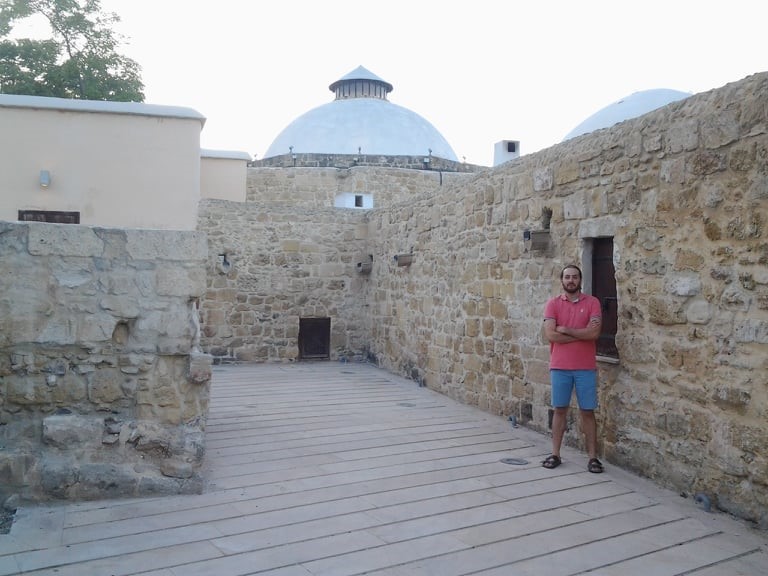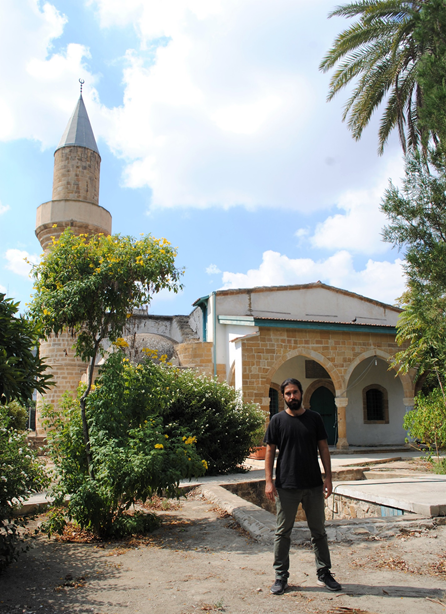Whenever we travel to a place, known or unknown, touristic or not, what are the first photos we take? Buildings. Isn’t it? And it makes sense because buildings have a lot of characteristics which easily attract our attention. First, they are obvious. Every organised historic city centre in the world makes it easy for everyone to wander around great buildings, even without using any gps or map. Second, buildings usually give us some safe evidence on how people lived, their living standards, their habits. And this has a name: history. But beyond history, local architectural monuments may have stories, stories of people, people with dreams and expectations. And we do not mean only people of the previous centuries. Yes, history is made by people who stepped in the monuments we visit before us, but stories are made by people who feel close to architectural monuments. And that’s what fascinates most four young Nicosia residents of different backgrounds who were asked to share their personal impressions and stories of their favourite building in Nicosia. What a chance to get to know some local insights, right? So, activate your imagination –that’s the tool of a successful trip- and enjoy their storytelling!

Rebecca Katsari, 34, educator and creator of Diodora Jewellery Famagusta Gate, Venetian Walls
“In Nicosia, nobody can escape the Venetian Walls” is Rebecca’s moto. “The stone circle that traps the old city centre in, is so dominant that you could hardly imagine how the city was before their construction”, says Rebecca. Indeed, we have to go 600 years back in time, when the first fortifications where constructed in the 14th century by king Eric B’, member of the Lusignans, as the Frankish dynasty of Cyprus was known. “There are only few parts of these early constructions and I am always keen on locating them. Something mysterious attracts my interest in them. It’s like the Franks are kind of unfairly treated by history!”, mentions Rebecca, “the Venetians fully replaced the old fortifications with the ones we now admire. I am a fan of great personalities and I feel that Giulio Savorgnano, the master architect of the Walls had a great creative idea. Did you know, by the way that the gate where we stand, known as Famagusta Gate, was initially named Giuliana, to honour the ‘’father’’ of the Venetian Walls?”, she asks with enthusiasm. “And the strange thing is that, despite the honour Savorgnano received, he was recalled and replaced before the completion of the construction. Soon, in 1570, the great Ottoman army was positioned in front of the walls claiming the city from the Venetian Empire. Who knows what Savorgnano would advise Nicosia’s governor to do if he was still there?’’, concludes Rebecca.

Vassilis Philippou, 27, musician & composer Hamam Omerye 8 Tyllirias Square, Nicosia 1016
“When tourists are around the Municipal Market in Nicosia Old City, the attention of most of them is captured by the gigantic stone-made Omeriye Mosque which was originally a church of the Order of the Augustinians dedicated to St Mary. There are a lot of impressive details to look at, like the main entrance gate, for instance, which belongs to the original 14th century building. The mosque was named after prophet Omer who, legend has it, visited Nicosia on his way to Egypt, and spent the night in the porch of the ruined church.’’, says Vassilis. “But when I come to my favourite bars or cafes around this area -and there are a lot- I always pay a short visit to the little brother of Omeriye Mosque: Hamam Omeriye, the tiny architectural masterpiece that Mustapha Pasha offered to the city as a gift. Even if you don’t want to enjoy a spa experience, it deserves a round. I always wonder, how many people may have entered in it? How many economic or political deals have been made in there some centuries ago, while the vapour and the essences were covering the wet atmosphere? And, sometimes, when I come back from my outing and I see the Hamam decorated with the moon and a sky full of stars, then these orientalist scenes become even more vivid in my imagination!’’, mentions Vassilis.

Marina Katsari, 32, storyteller, drama and theatre educator Axiothea Theatre 9 Axiotheas, Nicosia
“Don’t you have a place in your city where you feel like your spirit’s home? A place where every negative thought automatically goes away once you step in there? For me this place in Nicosia is Axiothea Theatre”, says Marina Katsari and she offers a big smile. “This building, located literally on the Green Line, is a typical example of 17th Cypriot architecture. It belonged to a rich and renowned local family but for the last decades the management has been undertaken by the Cultural Centre of the University of Cyprus. And for the last 20 years, Nicosia residents enjoy a high standards cultural festival which takes place every June and September, bringing to Nicosia music groups, artists, plays and performances from all around the world’’, she explains. When we ask her if she has performed in here she answers: ‘’for me this place had always been a temple. When I was given the opportunity to perform with my group, then I felt like a big wish was becoming reality. Its acoustic is amazing. Its vibes are unique. I feel lucky to have experienced performing in here’’.

Vaggelis Gettos, 32, European projects officer & copywriter Bayraktar Mosque Constantinou Palaiologou, Nicosia, opposite OXI open market
‘’What impresses me most with the history of Cyprus is that it was always a multicultural place. So many cultures, so many languages and religions coexisted. Not always harmonically but for long periods which some times were entire centuries, there was a memorandum of living in peace.’’, mentions Vaggelis Gettos. ‘’But, during these periods, there were strong monarchs who centrally mastered their territories. Bayraktar Mosque, though, symbolises domination. The funny thing with monuments is that we often pronounce their names without knowing or understanding what they mean. Bayraktar means standard-bearer in Turkish. The legend says that the mosque was named after the first Ottoman standard-bearer who climbed up the walls during the bloody battle between the Ottomans and the Venetians in 1570. There is also an unnamed tomb which is said to be his. How did that soldier feel the moment he stood up on the walls? What were his thoughts? What did he see within the walls?’’, Vaggelis wonders. ‘’In Nicosia, history speaks to you. It depends if you want to stop for a while and listen.’’, he sums up.


